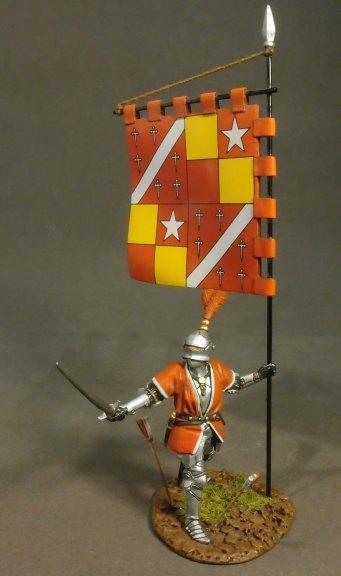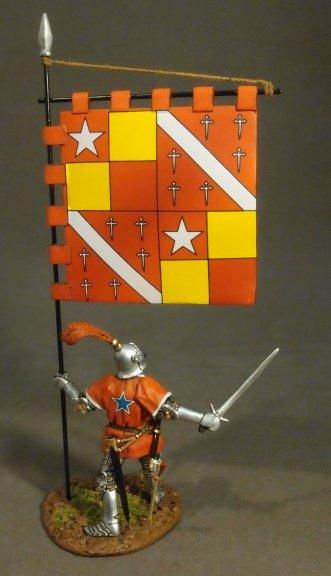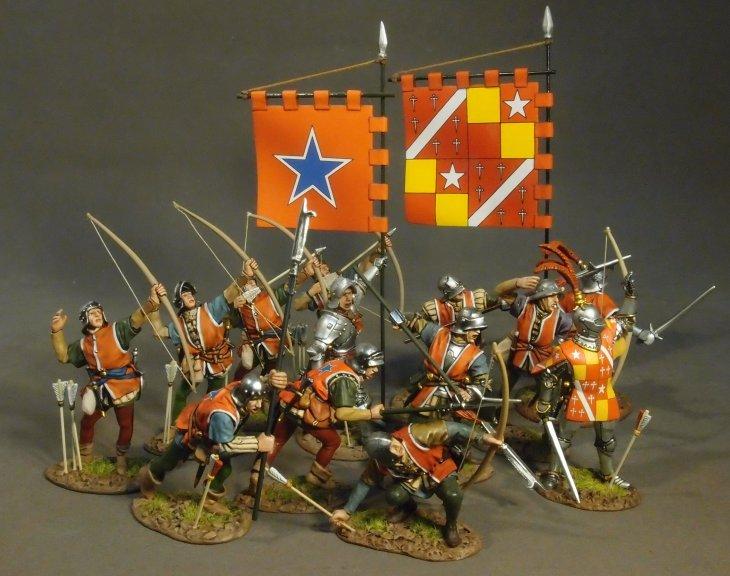Men At Arms with Battle Standard, The Retinue of John De Vere, 13th Earl of Oxford--single figure
$43.00
Item Number: OXLANC-02
Men At Arms with Battle Standard - The Retinue of John De Vere, 13th Earl of Oxford
There were 3 main types of flags used during the Wars of The Roses. The largest was known as the Heraldic Banner, and was used solely for displaying the coats of arms. This was normally square and made with stiffened buckram with a batton along the top. Therefore it was always on the fly, so the standard bearer did not have to wave the banner about, which gave him a spare hand in which he could brandish a weapon, so he would be able to defend himself and the banner. The Banner was a smaller version of the Heraldic Banner, and usually only carried one large badge or device. The field was often in the colour of the livery, but this was not a rule. The third type was known as a standard, and was a long swallow tailed style. The Battle of Bosworth (or Bosworth Field) was the last significant battle of the Wars of the Roses, the civil war between the Houses of Lancaster and York that raged across England in the latter half of the 15th century. Fought on 22 August 1485, the battle was won by the Lancastrians. Their leader Henry Tudor, Earl of Richmond, by his victory became the first English monarch of the Tudor dynasty. His opponent, Richard III, the last king of the House of York, was killed in the battle. Historians consider Bosworth Field to mark the end of the Plantagenet dynasty, making it a defining moment of English and Welsh history.
Henry recruited several experienced veterans on whom he could rely for military advice and the command of his armies, most notably John de Vere, 13th Earl of Oxford, who was Henry's principal military commander. Henry Tudor decided to commit most of his small force into one single large division or “battle” and place it under the command of the Earl of Oxford.
Additional figures sold separately.


